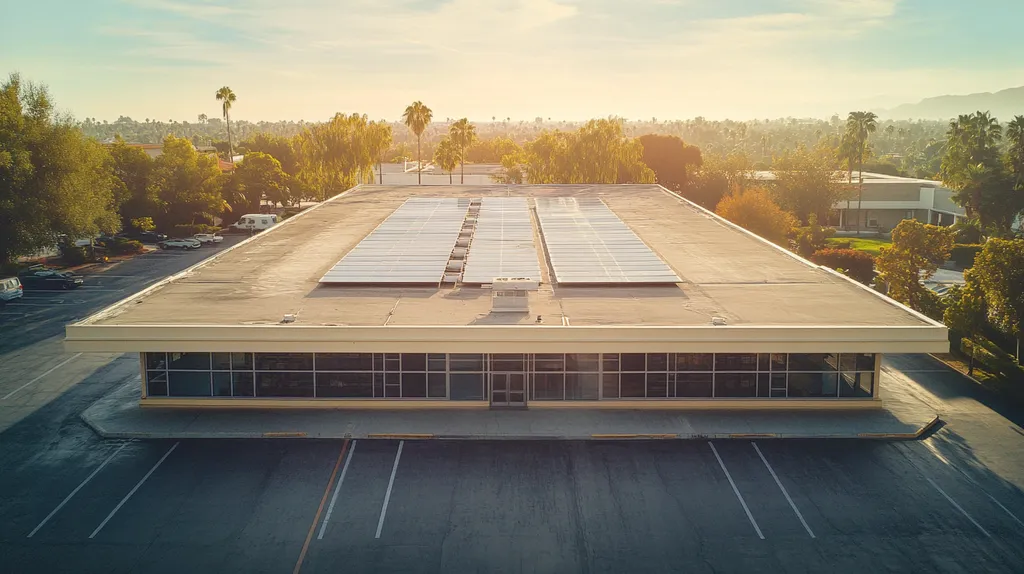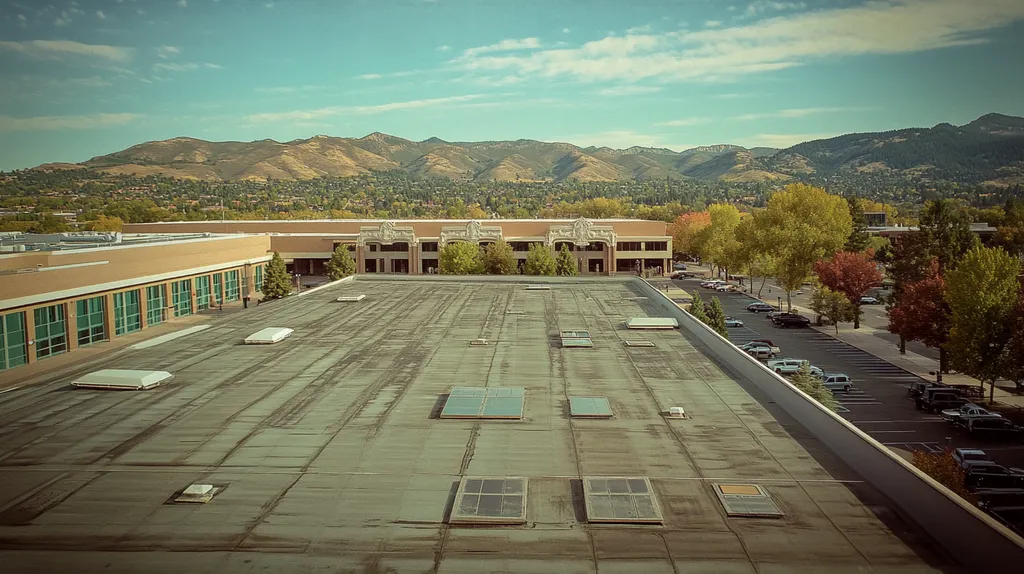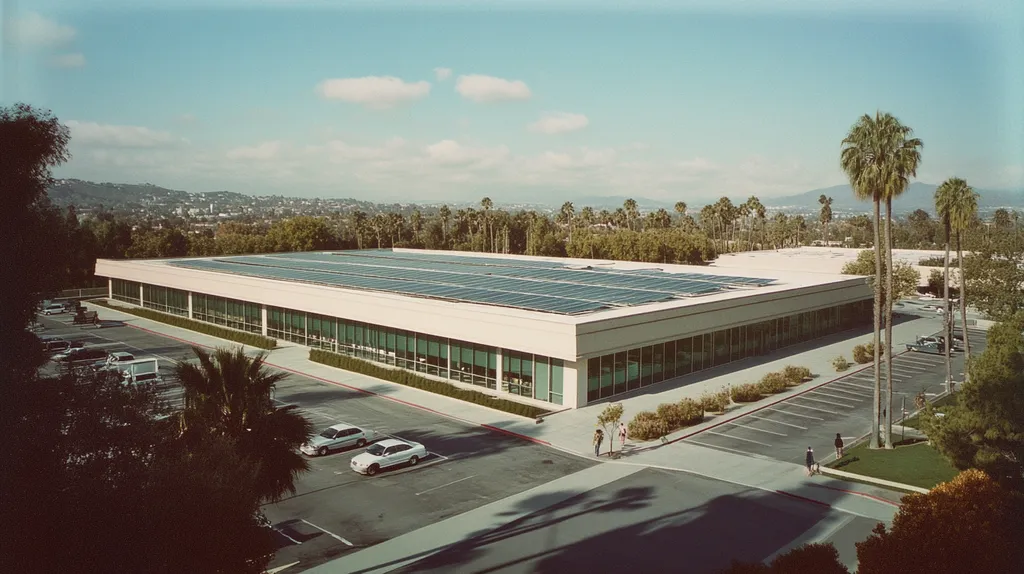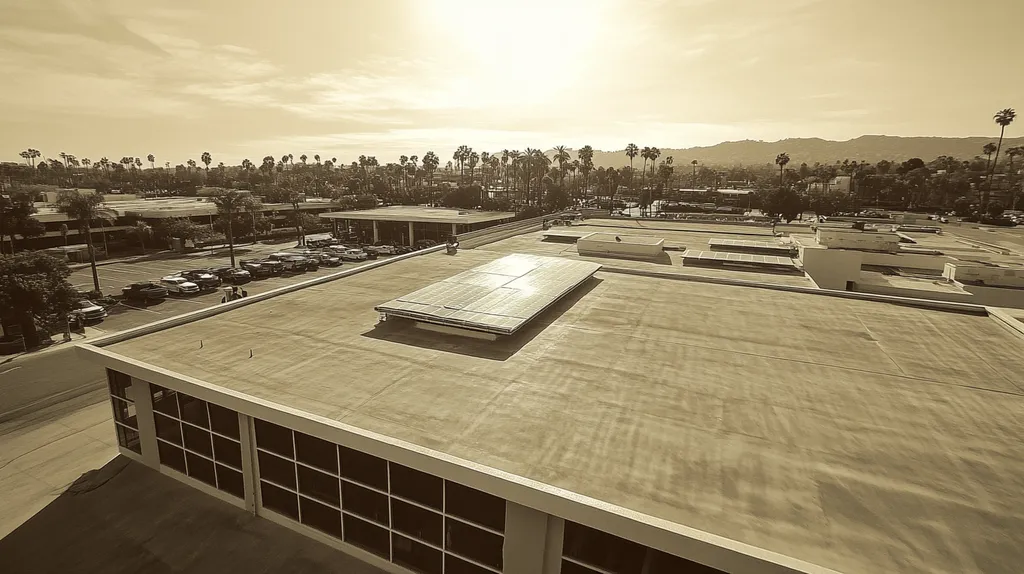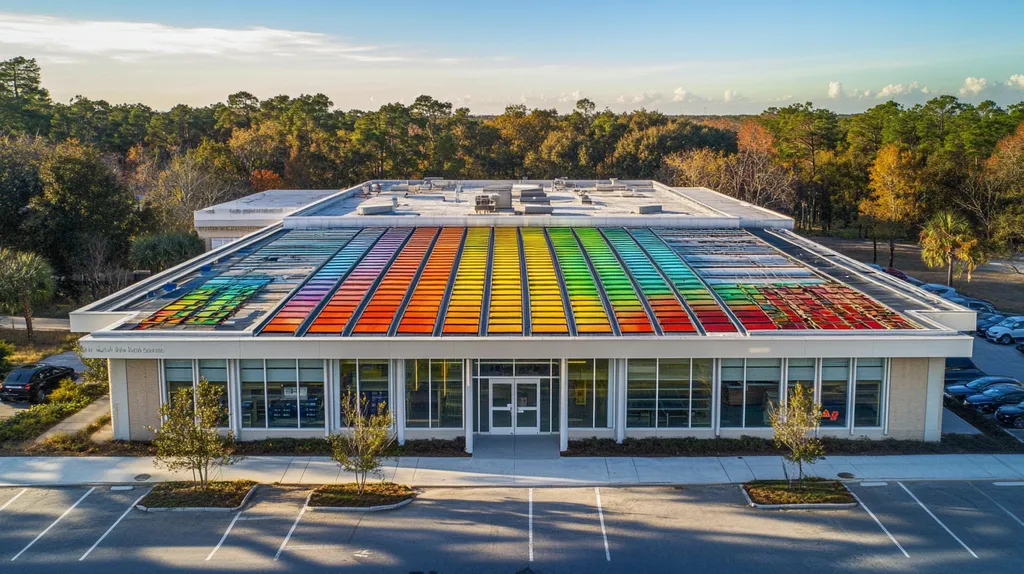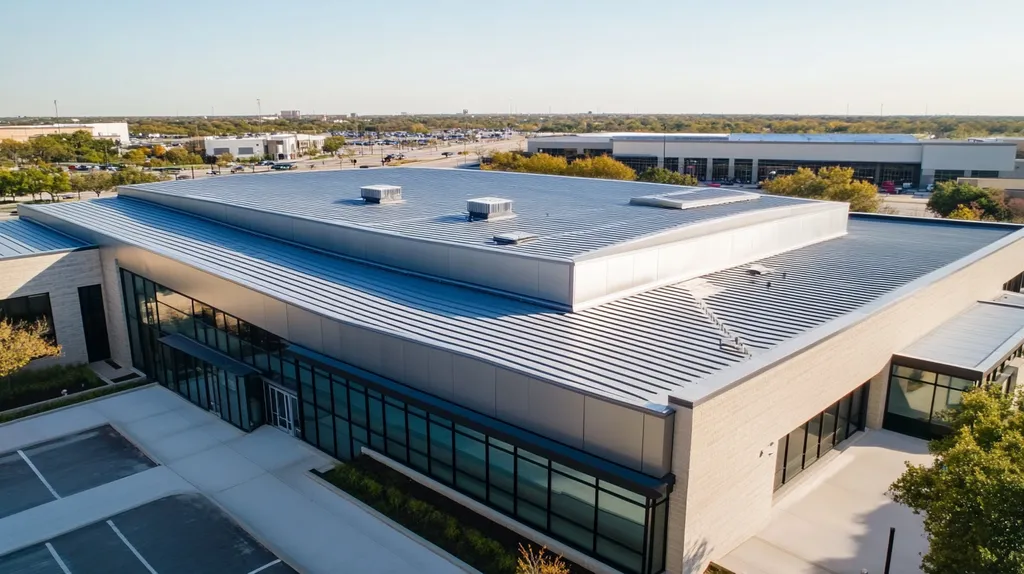Each year, commercial building owners forfeit millions in potential savings by misunderstanding the true economics of reflective roof coatings. Studies show these protective systems can slash cooling costs by 25-35% while extending roof life by up to 60%, yet persistent industry myths continue driving poor decisions.
From climate zone misconceptions to oversimplified cost analysis, these misunderstandings ultimately accelerate roof deterioration while inflating energy expenses by $0.50-0.75 per square foot annually.
This comprehensive analysis examines six critical aspects of reflective coating performance, dispelling common myths with documented evidence and real-world case studies that reveal the substantial long-term ROI potential of these sophisticated roofing solutions.
SECTION 1: COMMON MISCONCEPTIONS
Every year, commercial building owners waste millions of dollars on excessive energy costs and premature roof replacements due to widespread misunderstandings about reflective coatings. These preventable losses stem from outdated assumptions that continue to circulate throughout the industry. The stakes are particularly high as energy costs soar and building operators face mounting pressure to improve sustainability metrics.
Reflective Coatings Are Only for Hot Climates
The notion that reflective coatings only deliver value in warm regions overlooks their crucial role in total building performance across all climate zones. Even in moderate climates, these coatings significantly reduce peak cooling loads during summer months while providing important protection year-round.
Modern reflective coatings help regulate temperature fluctuations that cause thermal stress and premature aging in roofing systems. This benefit remains valuable regardless of geographic location, as all commercial roofs face degradation from UV exposure and thermal cycling.
Buildings in colder regions actually benefit from reduced thermal shock when snow melts, as reflective surfaces help maintain more consistent temperatures. This stability helps prevent the freeze-thaw cycles that often lead to membrane failures and costly repairs.
The coating’s ability to extend roof life through temperature regulation delivers ROI in any climate, making climate-based dismissal an expensive oversight.
Coatings Just Add Cosmetic Value, Not Real Performance
Viewing reflective coatings as merely aesthetic improvements ignores their sophisticated engineering and proven performance benefits. These systems actively protect the roofing membrane from UV degradation, which is a primary cause of premature roof failure.
Quality reflective coatings create a seamless, waterproof barrier that prevents moisture infiltration while reflecting up to 85% of solar radiation. This dramatically reduces the thermal load on the entire roofing system.
The reduction in peak roof temperatures – often by 50-60 degrees Fahrenheit – directly extends the service life of roofing components. This temperature reduction also decreases thermal stress on HVAC equipment, potentially extending its operational life.
When properly specified and installed, these coatings deliver measurable performance improvements that far exceed any aesthetic benefits.
All Reflective Coatings Are Essentially the Same
The dangerous assumption that all reflective coatings offer similar performance leads many building owners to make decisions based solely on initial cost. In reality, significant differences in formulation and manufacturing quality directly impact long-term performance.
Premium coatings incorporate advanced polymers and specialized additives that enhance UV resistance, flexibility, and adhesion. These characteristics determine how well the coating maintains its reflective properties and protective capabilities over time.
Installation requirements also vary significantly between coating types. Some require specific surface preparation or application conditions to achieve optimal performance, while others offer more forgiving application windows.
The distinctions between various coating technologies directly impact their service life, maintenance requirements, and ultimate return on investment. Understanding these differences is crucial for making informed decisions that align with building performance goals.
SECTION 2: PRACTICAL IMPLICATIONS
When commercial property owners make roofing decisions based on misconceptions, the financial impact can be staggering. Building operators regularly forfeit 25-35% in potential energy savings while inadvertently accelerating roof deterioration through poorly informed choices. These losses compound over time, affecting not just operational costs but also asset value and tenant satisfaction.
Impact of Misconceptions on Roofing System Selection
The confusion surrounding reflective coatings frequently steers decision-makers toward suboptimal roofing solutions. Many choose basic single-ply membranes when a reflective system would deliver superior protection and energy performance, simply because they underestimate the technology’s capabilities.
This selection bias often stems from focusing exclusively on initial installation costs while overlooking lifecycle expenses. A standard commercial roof typically requires replacement 5-7 years sooner than one protected by quality reflective coatings.
The impact extends beyond the roofing system itself. HVAC equipment working harder to compensate for higher roof temperatures faces accelerated wear, while interior comfort suffers from increased thermal transfer.
The compounding effects of these decisions create a cascade of unnecessary expenses that could be avoided through better-informed system selection.
How Myths Affect Maintenance Planning and Scheduling
Misunderstandings about reflective coatings frequently derail maintenance strategies. Many facility managers either over-maintain based on outdated requirements or completely neglect maintenance due to false assumptions about coating durability.
The reality is that modern reflective coatings require strategic but minimal maintenance. Simple quarterly inspections and annual cleaning typically suffice to maintain peak performance, yet many buildings lack even these basic protocols.
When maintenance planning fails to account for coating characteristics, problems compound rapidly. Dirt accumulation can reduce reflectivity by up to 30% within two years if left unchecked.
Proper maintenance timing is equally critical. Many facilities waste resources with unnecessary recoating while missing opportunities to address minor issues before they escalate.
Misguided Expectations for Energy Savings and Comfort
Unrealistic assumptions about reflective coating performance often lead to disappointment and skepticism. Building owners expecting instant dramatic savings may abandon beneficial coating programs when results don’t match inflated expectations.
The truth is that energy savings build progressively as systems optimize. Initial reductions of 10-15% in cooling costs typically expand to 20-25% as operational adjustments are made and coating performance stabilizes.
Indoor comfort improvements follow a similar pattern. While temperature reductions are often noticeable immediately, the full benefit of more stable interior conditions develops over several seasonal cycles.
Success requires understanding that reflective coatings are one component of a comprehensive energy strategy. Their effectiveness multiplies when integrated with proper insulation, ventilation, and HVAC management.
SECTION 3: COST OF MISINFORMATION
Every year, commercial building owners lose millions in potential savings by misunderstanding the true economics of reflective roof coatings. This financial drain stems from three critical errors: focusing solely on initial costs, delaying preventative maintenance, and overlooking available incentives. The combined impact of these mistakes typically reduces a building’s operational efficiency by 15-20% while accelerating the degradation of roofing assets worth hundreds of thousands of dollars.
Overestimating Initial Savings vs. Long-Term ROI
The true value proposition of reflective coatings emerges over their full service life, not at installation. While basic roofing solutions may cost 20-30% less upfront, they often require replacement within 10-12 years compared to 15-20 years for properly maintained reflective systems.
Energy savings compound dramatically over time. Buildings with reflective coatings typically reduce cooling costs by 25-35% annually, creating cumulative savings that dwarf initial price differences.
Maintenance costs also favor reflective systems. These coatings require simple annual cleaning and inspection rather than the frequent repairs common with traditional roofing.
The most significant financial impact comes from avoided disruption. Emergency repairs and premature replacement not only cost more but can severely impact business operations and tenant satisfaction.
Hidden Costs of Not Addressing Roof Degradation Early
Unprotected roofing membranes deteriorate 30-40% faster under constant UV exposure and thermal stress. This accelerated aging leads to microscopic damage that compounds exponentially if left unchecked.
Water infiltration through degraded roofing creates cascading problems throughout the building envelope. A single leak can cause thousands in structural damage while creating liability risks from mold growth.
HVAC systems struggle against increased thermal loads, consuming up to 25% more energy while experiencing faster component wear. The resulting strain reduces equipment lifespan by several years.
Interior comfort issues from poorly protected roofs directly impact tenant satisfaction and retention. Temperature fluctuations and humidity control problems often trigger lease negotiations or early terminations.
Missed Opportunities for Incentives and Rebates
Building owners regularly overlook substantial financial incentives for reflective coating installations. Many utilities offer rebates covering 15-30% of project costs, while some municipalities provide tax advantages for energy-efficient upgrades.
Energy Star certification becomes more achievable with reflective roofing, opening access to additional incentive programs and marketing advantages. This certification typically increases property values by 4-8%.
Green building initiatives often include reflective roofing in their qualifying criteria. Meeting these standards can unlock preferential financing terms and insurance rates.
The timing of incentive programs is crucial, as many operate with limited funding pools that deplete quickly. Waiting too long to implement reflective coatings often means missing out on these valuable opportunities.
SECTION 4: REALITY CHECK
Commercial building owners are forfeiting millions in operational savings by failing to understand the documented performance of reflective roof coatings. While skeptics continue debating their merits, real-world data proves these systems deliver substantial, measurable returns across diverse climate zones. The financial implications are staggering – buildings without reflective coatings typically spend 20-35% more on cooling costs while their roofs deteriorate up to 40% faster than protected systems.
Actual Energy Savings from Reflective Coatings by Region
High albedo roof coatings deliver dramatic cooling cost reductions that vary significantly by location. Advanced modeling across Phoenix, Houston, Los Angeles, and Miami demonstrates peak performance in cooling-dominant climates, with minimal winter heating penalties. (source: ASME Sustainable Buildings)
In the Sun Belt states, properly specified reflective systems routinely reduce peak cooling loads by 25-35% during summer months. This translates to annual HVAC savings of $0.50-0.75 per square foot in high-demand regions.
Even moderate climate zones see meaningful returns, with typical cooling cost reductions of 15-20% and peak load decreases of 20-25%. These savings compound over time as utility rates continue rising nationwide.
The insulation level of the existing roof system significantly impacts achievable savings. Buildings with minimal insulation often see the most dramatic improvements, while well-insulated structures still benefit from reduced thermal stress.
Verified Lifespan Extension Compared to Uncoated Roofs
Detailed lifecycle analysis reveals that quality reflective coatings extend roof service life by 40-60% compared to unprotected systems. This dramatic improvement stems from reduced thermal cycling and UV exposure that typically drive premature aging.
Temperature monitoring shows coated roofs experience 50-65°F lower peak surface temperatures than dark membranes. This reduction virtually eliminates the expansion and contraction that leads to membrane failures and separation at seams.
The protective barrier created by reflective coatings prevents UV degradation of the underlying membrane. This preservation of material properties helps maintain flexibility and water resistance far longer than exposed surfaces.
When factoring in avoided replacement costs, the lifespan extension alone delivers ROI of $2-3 per square foot – before accounting for any energy savings or operational benefits.
Case Studies: Real-World Performance in Commercial Settings
A 500,000-square-foot distribution center in Phoenix documented cooling cost reductions of 31% in the first year after coating installation. The facility’s peak roof surface temperatures dropped from 175°F to 110°F, while interior temperatures stabilized within a 5-degree range.
An office complex in Atlanta achieved 22% cooling savings despite moderate climate conditions. More importantly, the building eliminated chronic leak issues by addressing UV degradation that had compromised membrane seams.
A retail chain’s nationwide coating program across 2,000 locations demonstrated average energy savings of 24% while extending roof replacement intervals from 12 to 18 years. This success led to coating adoption becoming standard practice for their portfolio.
These real-world examples validate both the immediate energy benefits and long-term asset protection that quality reflective coatings deliver across diverse commercial applications.
SECTION 5: EVIDENCE-BASED ALTERNATIVES
The stakes couldn’t be higher for commercial property owners facing critical decisions about reflective roof coatings. Every day without proper protection means accelerated deterioration of roofing assets worth hundreds of thousands of dollars. With surface temperatures on unprotected roofs routinely exceeding 175°F during peak summer conditions, the combination of UV exposure and thermal stress creates a perfect storm for premature system failure. The right reflective coating strategy can dramatically extend roof life while slashing cooling costs – but only when properly selected and maintained.
Selecting the Right Coating for Your Climate and Roof Type
High albedo roof coatings deliver dramatically different performance levels based on their specific formulation and the climate where they’re installed. Advanced modeling across major U.S. cities demonstrates that properly specified systems can reduce peak cooling loads by 25-35% during summer months while minimizing winter heating penalties. (source: ASME Sustainable Buildings)
For metal roofing systems, specialized elastomeric formulations provide superior adhesion and flexibility to accommodate thermal movement. These coatings must maintain their elastic properties across extreme temperature ranges while resisting moisture infiltration at seams and fastener points.
Single-ply membrane roofs require coatings that won’t compromise existing warranty coverage. Premium silicone and acrylic formulations specifically engineered for TPO, EPDM, and PVC surfaces deliver optimal compatibility and longevity.
Built-up and modified bitumen systems benefit most from aluminum-pigmented or highly-reflective white coatings that can withstand ponding water while protecting against UV degradation of the asphalt components.
Integrating Coatings into a Proactive Roof Management Plan
Strategic coating deployment must align with comprehensive asset management objectives. This means carefully timing initial application to maximize both protective benefits and available incentive programs.
Regular infrared scanning and moisture surveys should guide coating decisions by identifying areas of compromised insulation or water infiltration that require remediation before coating application.
Documentation of surface temperatures, energy consumption, and coating performance creates valuable baseline data. This information drives continuous improvement in system selection while validating ROI for future projects.
Integration with preventive maintenance schedules ensures coatings receive appropriate cleaning and inspection. Even minor maintenance lapses can reduce reflective performance by 20-30% within the first two years.
Best Practices for Application and Ongoing Maintenance
Proper surface preparation represents the single most critical factor in coating success. All existing contamination, oxidation, and loose material must be removed to achieve optimal adhesion and durability.
Application thickness and coverage rates demand precise control to ensure uniform protection. Variations of just 25% in mil thickness can reduce coating lifespan by 30-40% while compromising reflective performance.
Environmental conditions during application directly impact coating cure and long-term performance. Temperature, humidity, and dew point must all fall within manufacturer-specified ranges throughout the installation process.
Ongoing maintenance requirements vary by coating type and exposure conditions. Most systems need semi-annual inspections and cleaning, with particular attention to drainage paths and high-traffic areas where coating wear accelerates.
SECTION 6: TEST AND VERIFY
Commercial building owners collectively waste millions annually by failing to verify the performance of their reflective roof coatings. Without proper testing and monitoring, even premium coating systems can underperform by 30-40%, negating potential energy savings and accelerating roof deterioration. The stakes are particularly high as building operators face mounting pressure to validate sustainability initiatives and demonstrate measurable returns on energy-efficiency investments.
Field Testing Methods to Confirm Coating Performance
Reflective coatings contribute significantly to ROI through measurable energy cost reductions and extended roof longevity, but only when properly verified through consistent field testing. (source: All or Nothing Roofing)
Surface temperature mapping using calibrated infrared equipment reveals hot spots and areas of compromised performance. These thermal scans should be conducted quarterly during peak cooling seasons to track coating effectiveness.
Reflectivity testing using specialized radiometers measures solar reflectance values directly. This data helps identify when cleaning or recoating becomes necessary to maintain optimal performance.
Regular adhesion testing ensures coating systems maintain their protective bond with the substrate. Even minor delamination can accelerate degradation and compromise energy performance.
Monitoring Tools for Tracking Energy and Maintenance Savings
Advanced energy monitoring systems provide granular data on cooling load reductions. These platforms should track consumption patterns before and after coating application to quantify actual savings.
Building automation systems can correlate roof surface temperatures with HVAC performance. This integration helps optimize equipment operation while validating coating effectiveness.
Maintenance tracking software documents inspection findings, cleaning schedules, and repair history. This data builds a comprehensive performance profile that guides future coating decisions.
Regular analysis of these metrics helps identify emerging issues before they impact building performance. Early detection of coating degradation enables proactive intervention that preserves both protection and efficiency.
Third-Party Certification Standards and Compliance Checks
Independent laboratory testing provides crucial validation of coating performance claims. These tests measure critical properties like solar reflectance, thermal emittance, and weathering resistance under standardized conditions.
Energy Star and Cool Roof Rating Council (CRRC) certifications establish minimum performance thresholds. Products meeting these standards demonstrate verified capabilities for energy reduction and UV protection.
Regular compliance inspections ensure coating systems maintain their rated performance. These checks typically include adhesion testing, thickness measurements, and reflectivity verification.
Documentation of certification compliance strengthens warranty coverage while supporting sustainability reporting. This verification proves particularly valuable when pursuing green building certifications or energy incentives.
The Bottom Line
Every year, commercial buildings forfeit $3.50 per square foot in preventable expenses by ignoring proven reflective coating benefits, amounting to billions in wasted operational costs industry-wide.
The evidence is undeniable – quality reflective coatings extend roof life by 40-60% while reducing cooling costs by 25-35% across diverse climate zones.
Buildings face unprecedented pressure to improve energy efficiency and reduce operating expenses, making reflective coating decisions more critical than ever.
The technology exists today to dramatically improve commercial roof performance, protect valuable assets, and slash energy consumption – but only through informed selection, proper installation, and consistent verification.
The cost of inaction continues rising as energy prices climb and roofing systems deteriorate needlessly, making evidence-based coating strategies an essential priority for forward-thinking building operators.
FREQUENTLY ASKED QUESTIONS
Q. Are reflective coatings only beneficial for commercial roofs in hot climates?
A. Contrary to popular belief, reflective coatings provide performance benefits across all climates. They help regulate temperature fluctuations, reducing thermal stress and extending roof life. In colder areas, they can prevent thermal shock from melting snow, protecting the roof year-round.
Q. How do misconceptions about reflective coatings impact commercial roof choices?
A. Misinformation often leads property owners to choose less effective roofing options, sacrificing performance for lower initial costs. A suboptimal selection can accelerate roof deterioration and increase HVAC energy consumption, creating ongoing financial burdens instead of savings.
Q. What are the hidden costs of not using reflective coatings on industrial roofs?
A. Skipping reflective coatings can lead to rapid roof degradation, resulting in costly repairs and premature replacements. Over time, energy inefficiencies increase operational expenses while compromising tenant comfort and satisfaction, affecting overall building value.
Q. How do reflective coatings extend the lifespan of commercial roofs?
A. Reflective coatings dramatically lower peak surface temperatures, reducing thermal cycling that leads to material fatigue. By protecting the underlying membrane from UV exposure and weathering, these coatings can extend roof life significantly, enabling longer replacement intervals and maximizing ROI.
Q. What best practices should be considered for reflective coating applications?
A. Proper surface preparation is critical to ensure successful adhesion and durability of reflective coatings. Monitoring environmental conditions during application is also essential. Regular inspections and cleaning are necessary to maintain performance, as even minor maintenance gaps can significantly reduce effectiveness.
Q. How can I verify the performance of my reflective roof coating?
A. Regular field testing, like thermal imaging and reflectivity assessments, is crucial for verifying coating effectiveness. Monitoring energy consumption and maintenance records also helps track performance, ensuring that any issues are identified and addressed promptly to prevent losses.
Q. Are there financial incentives for installing reflective coatings on commercial roofs?
A. Yes, many utilities offer rebates and incentives for energy-efficient upgrades, including reflective coatings. Additionally, achieving certifications like Energy Star can make properties eligible for further incentives, enhancing financial returns and property value.

